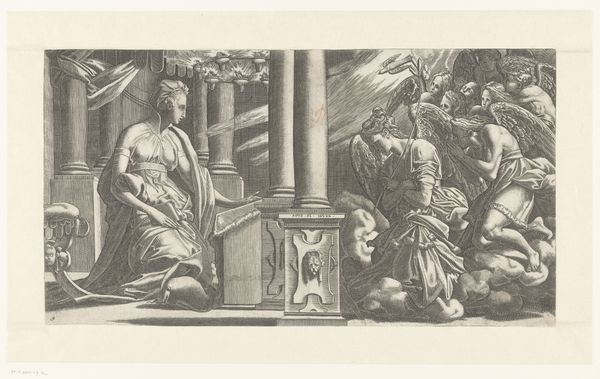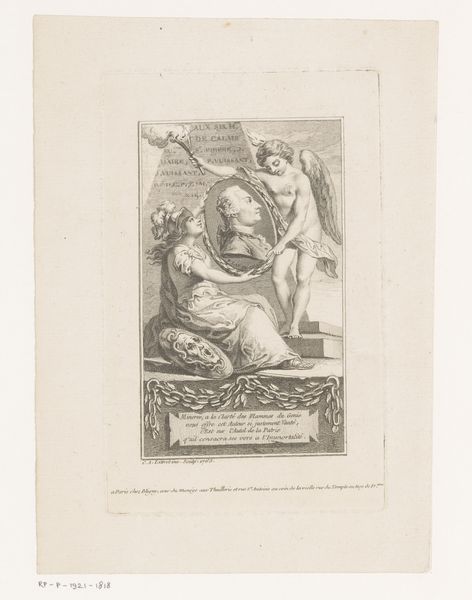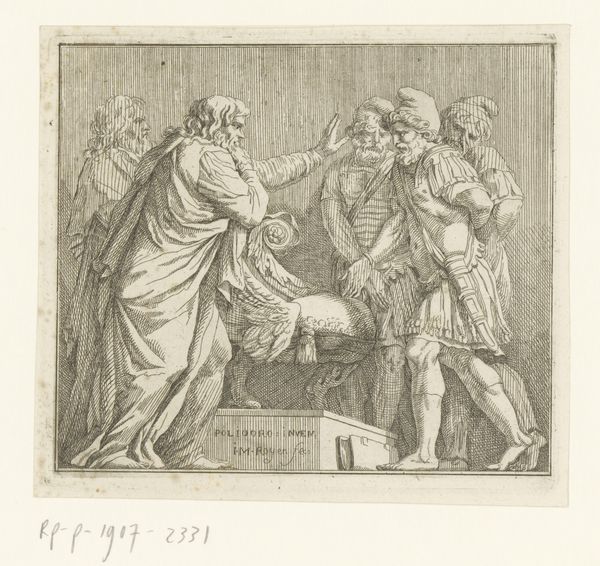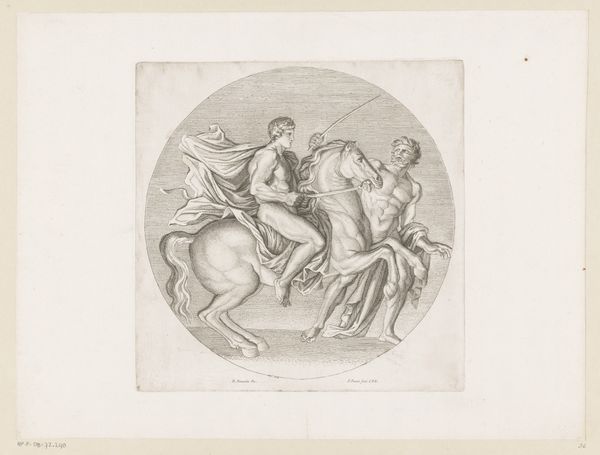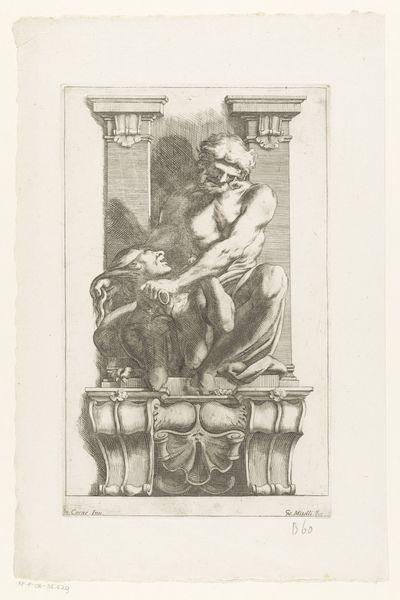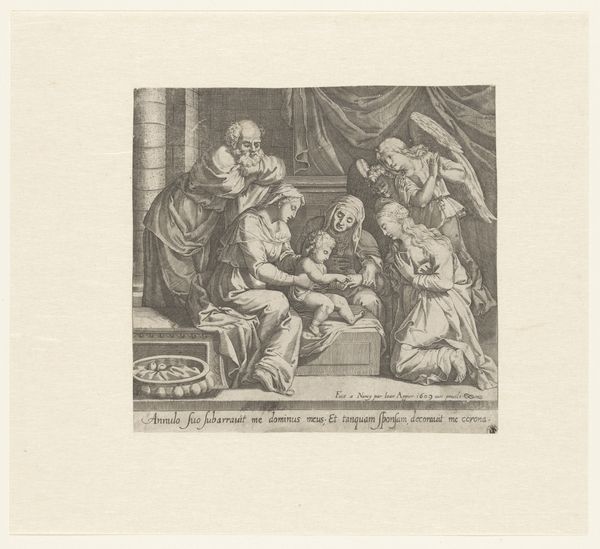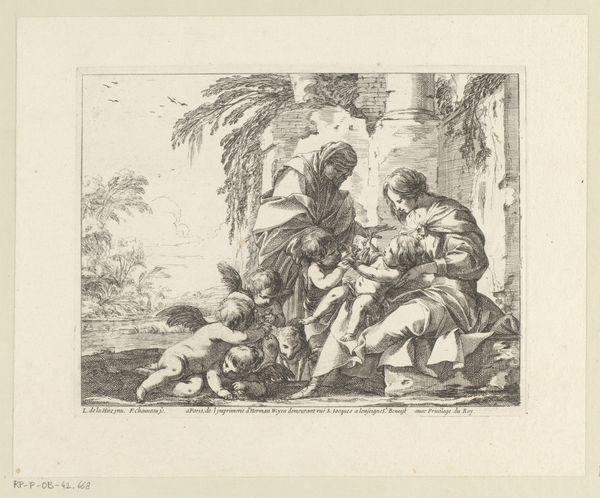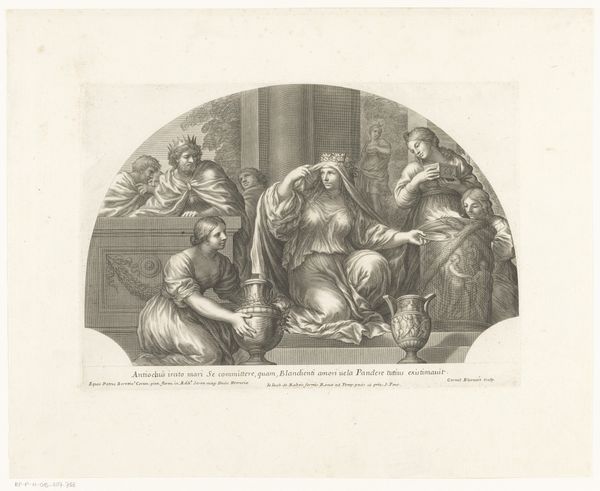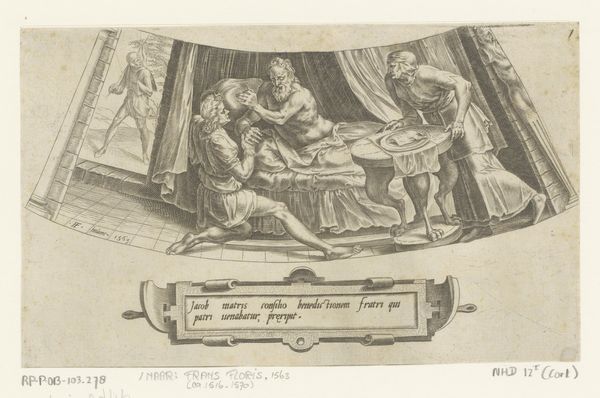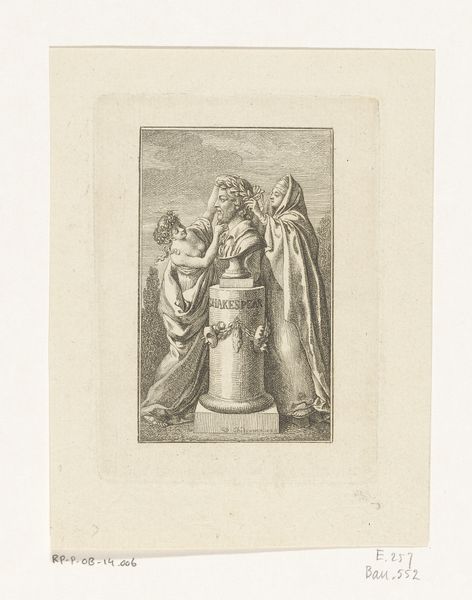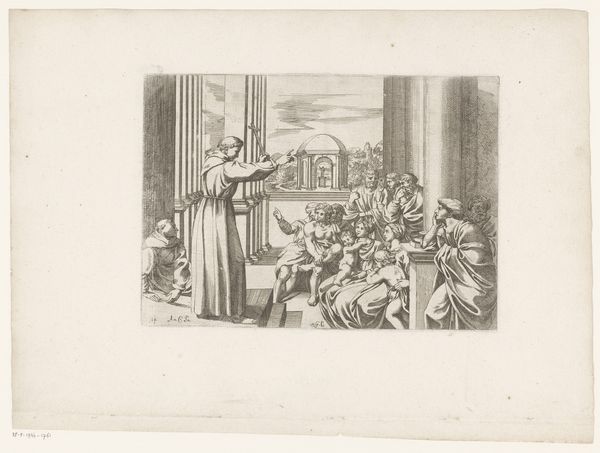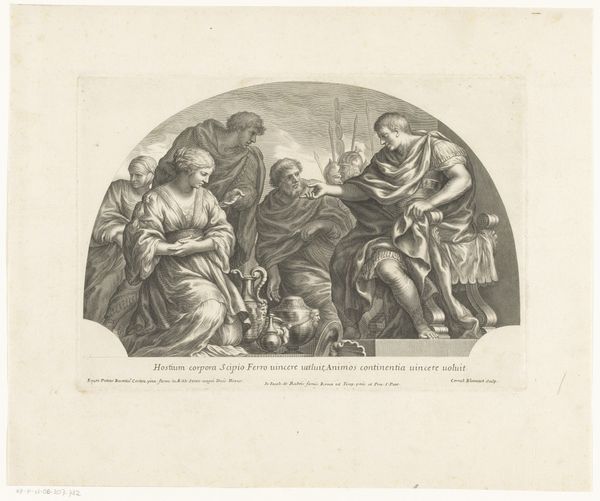
engraving
#
neoclacissism
#
allegory
#
old engraving style
#
classical-realism
#
figuration
#
line
#
history-painting
#
engraving
Dimensions: height 93 mm, width 140 mm
Copyright: Rijks Museum: Open Domain
Jacques Louis Copia made this print called "Justitia beschermt Onschuld tegen Misdaad" or "Justice Protecting Innocence from Crime," sometime in the late eighteenth century. The printmaking process is fascinating because it allows for the detailed duplication of an image through physical and chemical means. The material itself is paper, a common substrate, yet the image it carries represents a critical discourse around justice and morality. To make this print, Copia would have used an engraving tool, to cut lines into a metal plate. Ink would then be applied to the plate, and then wiped off the surface, remaining only in the engraved lines. The plate is then pressed onto paper. The resulting lines give form to the figures and narrative. Engraving, like other printmaking techniques, democratized image production. It made art and ideas accessible to a wider audience, beyond the elite circles that could afford original paintings or sculptures. This particular print reflects the Enlightenment ideals of justice and the protection of innocence, concepts that were circulating widely in society and informing political discourse. Looking at this artwork, it reminds us that materials and making processes are central to understanding its cultural significance. It challenges us to look beyond the surface of fine art, and consider the skilled craftsmanship, and social issues that are often embedded within.
Comments
No comments
Be the first to comment and join the conversation on the ultimate creative platform.
